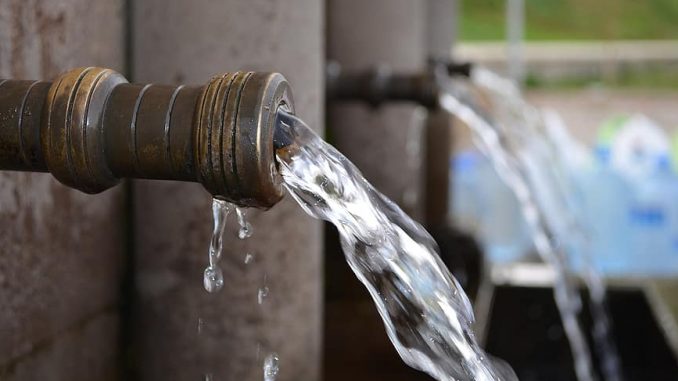
Pipes are not meant to make noises and certainly not loud ones. When they do start banging, it can be a real worry – a problem which, most of the time, is caused by water hammer.
Water hammer begins as an inconvenience but leave it untreated and it can become much more than that. Which is why we have written up this guide, answering what water hammer is and how you can stop it from ruining your pipes.
What is water hammer?
Water hammer is the sound that your pipes emit when moving water within them comes to a sudden stop, causing the entire pipework system to shake, rattle and roll as Buddy Holly might have said.
The halt is caused when you shut water off, normally through the closing of a tap. As water that was expecting to pour out reaches the exit point of the pipe, it suddenly finds its pathway blocked by a turned off tap and so slams into it.
Is water hammer dangerous?
When water hammer first starts, it is at most an irritation. Hearing a banging coming from your pipework system whenever you turn a tap off can be disruptive for people living in an effected property.
Leave the problem untreated however and it can lead to serious complications down the line. Shocks and vibrations bouncing through your pipework will weaken the system, making it more susceptible to developing cracks, holes and other issues going forward.
What starts out as an annoying noise that you could learn to live with can eventually lead to an emergency pipe repair being required.
Thankfully, the two main causes of water hammer are relatively straightforward to fix.
Waterlogged air chambers causing water hammer
Modern pipework systems are fitted with air chambers which are designed to prevent water hammer from occurring.
Air chambers are located where valves are found and act as cushions. When a tap is shut off, the air softens the blow of the water running into the now-closed tap, reducing the amount of noise caused.
You can hear the hammering noise when air chambers start to fail. Over time, water will begin to replace the air in these chambers, removing the cushion. With no air to absorb the blow, the water within the pipe is now free to crash into the blockages that are placed in its way, resulting in loud noises.
To fix this cause, you need to replenish the air supplies within the chambers. To do this, turn off the water supply coming into your property at the mains. Then turn on all the taps to drain any remaining water from the pipework system.
Once this is done, air will replenish the drained air chambers. Turn the mains back on, let water run out of your pipes and then turn the taps off again. Your chambers should now be full of air, restoring their shock absorbing ability.
On some occasions, it may be limescale, residue from chemicals or other minerals that have displaced air from the chambers. These blockages can be easily cleaned by removing the effected part and scouring it out.
High water pressure causing water hammer
If replenishing your air chambers does not solve the problem or your pipework system is so old not to have chambers installed, then high water pressure could be the cause. In which case, you need to lower your water pressure.
By lowering the pressure, you are slowing the speed at which water passes through pipes. Slower water will collide with closed taps and valves with less violence, reducing the disturbance caused.
Most households are able to control water pressure via their boiler. Pressure for the average household water system should be between 1 and 1.5 bar, so if yours is showing above that level then that could be behind your water hammer.
If you find that you cannot adjust water pressure via your boiler, then there are other steps to take. A water hammer arrestor acts like an air chamber by offering pressurised water a space to go rather than smashing into a closed valve. Alternatively, a water pressure regulator gives you greater control over the pressure in your pipework systems.
Both products are available from DIY stores and can be self-fitted or installed by a plumbing professional.
Secure loose pipes to reduce the disruption caused by water hammer
Once you have treated the cause of water hammer, there is one final step you should take to silence knocking pipes for good.
Check your pipework systems for any loose fittings that might be able to move and vibrate. Such pipes can bang into walls and each other, leading them to make quite the racket, even after you think you have sorted your water hammer problem out.
You can bind pipes together using high-strength pipe repair tape or pipe clips. This will eliminate another source of noise, helping to reduce the impact of water hammer should it return again in the future.

Leave a Reply